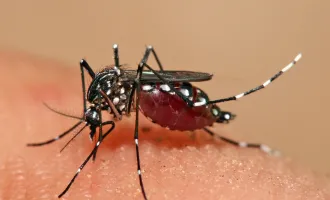Open Access Inspires New Publishing Models
This series explores the impact of open access journals on the scientific publishing industry. In this final installment, we look at how the industry's shifting fee structure is hurting scientists. We also explore the rise of alternative publishing models.
Many scientists make the assumption that open access journals are non-profit entities because of their “open” nature and the fact that they do not charge subscription fees. In fact, few open access journals are truly non-profit organizations; many are simply companies generating revenue using a different business model.
Whereas closed access journals make a majority of their money through subscription fees, open access journals must find revenue elsewhere. By far, the most recognizable model is to charge authors “article processing fees,” or APCs, to cover the costs associated with online publication.
In the span of a few years, open access journals have altered the scientific publishing landscape, making it cheaper and easier for researchers to access published research. But in doing so open access journals have shifted the cost of publication from the reader (or university library) to the scientist-author.
“To be self-sufficient, you have to have a way of generating income, and page charges are one of the ways,” said Dr. Alexander Johnson, professor of Microbiology and Immunology and Biochemistry and Biophysics at UCSF. “Someone has to pay for it.”
With research funds increasingly difficult for new investigators to secure, every dollar is precious. And for investigators trying to make a name for themselves in the scientific world, publications are the primary form of currency. Despite the surging popularity of the open access movement, the increasingly popular APC business model may not be sustainable for penny-pinching scientists in times of dwindling lab funds.
A Numbers Game
Biomedical sciences journals charge the highest APCs of any science, technology and medicine (STM) discipline, with the average fee in 2010 running just over $1,000, according to an article by Drs. David J Solomon and Bo-Christer Björk published in the Journal of the American Society for Information Science and Technology. According to their calculations, the biomedical field spent over $64 million in APCs for open access journals, with many journals charging between $700 and $1800.
“I’m seeing some pushback from faculty, mostly to the ‘author-pays’ model of open access,” said UCSF Library’s Director of Serials Anneliese Taylor. “Those who are opposed think that the university is pushing costs off on researchers, while at the same time their research awards are decreasing.”
But this should not be a disincentive for scientists to publish in open access journals, according to Johnson.
“The critical thing is to look at the entire cost of a research project—and the journal publication charges are a very small part of that,” he said. “Compared to the salaries that are being paid to people and the cost of supplies and the infrastructure, it’s a very small percentage of the overall cost.
Avoiding APCs
And for those authors who cannot afford or refuse to pay APCs, there are many open access options.
“If you look at the Directory of Open Access Journals (which has close to 10000 journals), not even 50 percent of those charge a fee or any processing or publication charge,” explained Taylor. “The reason that’s not as widely known is just because the ones that have really made a reputation for themselves do charge.”
In fact, open access journals with APCs were more cited than their free counterparts, according to the Solomon and Bjork article.
Even if researchers limit their options to open access journals with impressive impact factors (and APCs that go along with them), many offer discounts and waivers for researchers with dwindling funds or located in foreign countries deemed worthy of discounts.
For example, PLoS, like many other open access journals, participates in a Global Participation Initiative, which segregates countries into three groups: one that pays the normal fee without discount, one that pays a $500 flat fee for publication and a group that pays no fee at all. Even Cell Reports, the open access journal with a $5,000 APC, will consider waiving its fee on a case-by-case basis if authors have difficulty paying.
For individual scientists, APCs are often manageable with discounts and careful journal selection regardless of the scientist’s funding level. Universities, on the other hand, see a larger shift—one that ultimately results in a higher cost of publication for the community as a whole.
“When we look at the output from UCSF— about 6000 articles every year—it would actually cost the university more to pay open access APCs compared to what we pay for subscriptions,” said Taylor. “We just can’t go there based on the current APC model—it wouldn’t be economically sustainable or sensible to do that.”
New Publishing Alternatives
If APC-based business models are ultimately unsustainable, is there a better model?
One option is to create an entirely new business model—one that doesn’t require fees from the authors or the subscribers.
eLife is a new journal, heavily subsidized by Max Planck, Wellcome Trust and the Howard Hughes Medical Institute (HHMI), that is currently free to publish in.
Unlike many other journals, eLife plans to make the peer review process transparent and faster by having the editor “and his/her referees confer online to arrive at a consensus decision on the fate of a paper under review,” said Dr. Randy Schekman, 2013 Nobel Prize Laureate and editor of eLife. “Importantly, the reviewers are identified to each other so that they know going into an eLife review session that they will have to consider the views of peers in their field and may not do so behind a screen of anonymity.”
“By their account, it’s not cheap to do what they’re doing (because they’re adding quite a bit of value to their publication) but they have the money to do it,” said Anneliese Taylor.
“The founding sponsors of eLife feel that they should support publishing the best work in the life sciences with no consideration of profit,” said Schekman.
eLife plans to remain APC-free for the next two years as a way to encourage submissions, and then initiate an APC some time after that, according to Schekman.
“This will defray some of our expenses but I believe we will continue to rely on private and national foundations who believe in our model and will offer financial support to help us achieve our goals,” he said.
PeerJ, a journal funded by Drs. Jason Hoyt and Peter Binfield, is also trying a new model. Instead of charging a publishing fee for each article, PeerJ charges a low, one-time fee per author of the publication, which can be as low as $99/author for a basic membership. Minimal membership duties include performing a formal review of a submitted PeerJ manuscript or contributing informal comments on submissions or accepted papers at least once a year to maintain the lifetime membership.
After this one-time fee, authors can publish as frequently as their plan allows—for example, the $99 plan allows for one publication in PeerJ per year.
“That was one of the reasons we started PeerJ—to try and make the process of publishing open access content as cheap and as accessible as possible for the author,” said Binfield, one of the cofounders of the company.
Not surprisingly, PeerJ has the potential to save scientists and institutions thousands of dollars per publication.
Some of the newest open access journals are sticking with the tried and true APC. F1000Research, launched in early 2013, is an online open access journal unique for its post-publication peer review process. Their goals are three-fold:
“To massively speed up the publication process—from the time you’re ready to publish to the time other researchers get to benefit from the research; get rid of bias in the refereeing system; and open up the data behind that research,” according to Rebecca Lawrence, Director of New Product Development at F1000Research.
F1000’s focus on transparent post-publication review, in which invited peers make their formal reviews public along with the published manuscript, makes it a unique model of peer-reviewed scientific publications. But to cover the costs of publication, F1000 decided on “a standard APC model in some regards, but significantly cheaper than some of the major open access journals,” said Lawrence.
Indeed, APCs for F1000 range from $250 to $1000 and include web hosting of online data and article revisions and updates (along with new digital object identifiers, or DOIs) in addition to traditional APC benefits, which typically include peer review, journal production and article hosting and archiving.
With some open access journals getting pushback about high APCs, the traditional subscription-based publishing model could even find itself back in favor. Trade journals associated with foundations, such as Science with the American Association for the Advancement of Science (AAAS), or Molecular Biology of the Cell with the American Society for Cell Biology, are often non-profit enterprises and use subscription fees for more than just covering journal cost.
For Science, excess income from subscriptions supports other activities of the society such as scholarships for students to visit an annual society conference, according to Dr. Bruce Alberts, the former editor-in-chief of Science.
“Highly selective journals like Science or Nature accept something like one paper in 20 submissions, making the operation so costly that an open access fee would need to be something like $20,000 per article to cover journal publication costs,” he said.
While it seems unlikely that journals like Science will become open access, Alberts makes the distinction that “open archive seems to me to be the best bet for the future”—a model where articles aren’t immediately available for free but are archived in a way that makes them freely available after a certain period of time.
Institutional Funding Shift
One common concern amongst scientists is that page charges for open access journals will continue to rise, thereby pricing out young laboratories with small budgets. It’s a serious enough concern that universities are taking note. Many universities have begun pilot funds for cash-strapped laboratories seeking to publish in open access journals, including Carnegie Mellon University, Harvard University, many UK universities through the Research Council UK, and the University of California. Information on UCSF’s open access pilot fund can be found at https://www.library.ucsf.edu/services/scholpub/oa/fund.
One option for scientists is to shift their publishing to journals without APCs, such as eLife and PeerJ, but it remains to be seen how popular these nascent journals will become with the scientific community, as measured by their impact factor.
In the absence of these radically new publishing models, how will universities adapt to the changing fiscal environment with regards to scientific publishing?
UCSF’s Keith Yamamoto, Vice Chancellor for Research, Executive Vice Dean of the School of Medicine, and Professor of Cellular and Molecular Pharmacology, thinks the institutions should take on the responsibility for financing publication of scientific research.
“I think that universities should consider publishing a cost of doing business, just like electricity,” he suggested. “If you don’t publish your work, it’s just like not doing it. The institution is outsourcing one of the critical functions of the faculty, which is scholarly publication of the work. They outsource electricity to PG&E. They outsource water to whatever it is. There’s a twin responsibility from the funder and the institution that paid for that work, and it’s completely justified.”


